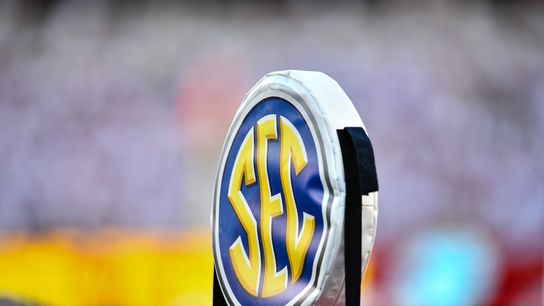When USC and UCLA stunned the college football world by joining the Big Ten, it seemed anything and everything was now on the table. Texas and Oklahoma joining the SEC was one thing, but two Los Angeles schools joining a conference based in the Upper Midwest was something else entirely. If USC and Rutgers can be in the same conference, what's stopping any other moves? Could the SEC and Big Ten grow to 18, or 20, or more?
Many in college sports were asking those questions at the time but now, two weeks later, it's becoming clear the Big Ten's move was a single strike, not the first volley in an all out aerial assault.
Saturday Down South and CBS Sports reported Monday that the SEC will not respond to the Big Ten's addition of USC and UCLA by adding numbers itself. (Of course, the Big Ten quite possibly doesn't add the LA schools without the SEC adding Texas and OU first.)
CBS Sports able to confirm but tremendous reporting by @MattHayesCFB who broke the story. Huge realignment implications. https://t.co/zou9r5iYNA
— Dennis Dodd (@dennisdoddcbs) July 11, 2022
Industry consensus immediately following the Big Ten's move -- and the Big Ten's lack of moves in the last two weeks has confirmed this -- that the conference is waiting on a decision from Notre Dame before moving forward. Notre Dame AD Jack Swarbrick has said that, for now, the Irish are comfortable remaining independent.
"We don't feel any particular urgency," Swarbrick told ESPN last week. "We think there's ample time for us to let the landscape settle."
For Notre Dame, it's not an issue of sacrificing money as part of a Big Ten (or SEC) contract compared to what they earn from selling six or seven home games a year to NBC. The Irish already lose money as an independent; favored nation status as an independent is worth it. What would push Notre Dame to a conference is a new playoff system that would lock them out without conference membership.
And while it remains to be seen what form the College Football Playoff will take after the 2025 season, the 12-team format proposed last summer reserved six spots for at-large teams. It's unlikely that the post-2025 format will be a copy-and-paste of that bracket, but it is likely that the new bracket will be even more Notre Dame-friendly. The SEC is widely expected to push strongly for a format with no guaranteed spots for conference champions, instead growing the bracket to the top eight, 10 or 12 ranked teams. If that becomes the case, Notre Dame likely remains an independent for the duration of that contract.
The Playoff problem will be solved within the next two years, and so it's likely that the landscape stays as it is (at least at the top) until then.
Oregon and Washington would join the Big Ten tomorrow... but if the Big Ten wanted the Ducks and the Huskies, they'd be in the Big Ten today.
Gone are the days when conferences expand simply to get their networks on cable systems in major media markets. Rutgers and Maryland would not get B1G invites today. What moves the needle are brands, not markets, and all indications are that the No. 1 brand on the table is comfortable where it is, for now.
That's not to say there are no non-SEC/Big Ten schools that those two leagues wouldn't add. Clemson and Florida State would make a lot of sense as SEC schools. North Carolina and Virginia could find themselves at home in the SEC or the Big Ten.
But all four of those schools are locked in the ACC's grant of rights contract, which runs through 2036. It remains to be seen if any ACC school could get out of that contract if they tried, but we can infer they don't think any attempt would be successful, because none of them have tried.
And so now we sit and we wait.
Would I bet on the FBS alignment of 2025 remaining in place through 2050? No, no I would not. Schools have been changing conferences since long before 2021, or 2010, or 1992. But would I bet on the picture we have today remaining current through, say, the end of 2023? Yes, yes I would.
